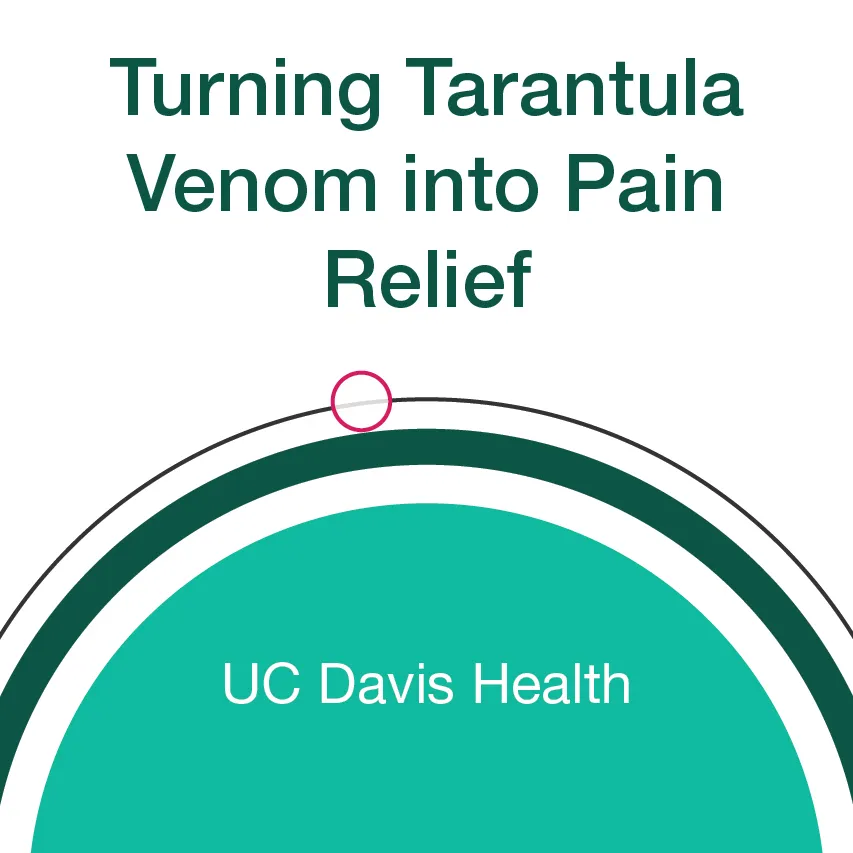What is Tarantula Venom
Tarantula venom is a complex mixture of proteins, enzymes, and other compounds injected into prey or perceived threats through the spider’s fangs. Its primary function is to subdue the tarantula’s prey, such as insects, small rodents, and even birds, depending on the species and size of the spider. The venom works by disrupting the nervous system and causing paralysis. While tarantulas are venomous, their venom is generally not considered highly dangerous to humans. However, individual reactions can vary significantly, and some people may experience allergic reactions. Understanding the nature of tarantula venom is crucial in assessing potential health risks and ensuring appropriate responses to bites. The severity of a reaction often depends on factors such as the amount of venom injected, the size and health of the individual, and individual sensitivity.
Composition of Tarantula Venom
The composition of tarantula venom is a sophisticated blend of active components, primarily proteins and peptides. These substances work synergistically to induce various effects on the target organism. Neurotoxins are among the most critical components, acting on the nervous system to cause paralysis and disrupt the prey’s ability to escape. Enzymes play a crucial role in breaking down tissues, facilitating the digestion of the prey. Other components may contribute to inflammation, pain, and localized tissue damage. The exact composition varies depending on the species of tarantula, and this variation influences the potency and effects of the venom. Researchers continue to study tarantula venom to understand its precise mechanisms of action and potential applications in medicine, such as developing new pain medications or insecticides. This detailed understanding helps in developing effective treatments for tarantula bites and allergic reactions.
Allergic Reactions to Tarantula Venom

While tarantula venom is not typically life-threatening to humans, allergic reactions can occur, varying in severity from mild to severe. An allergic reaction happens when the immune system overreacts to the venom components, identifying them as harmful. This exaggerated response triggers the release of histamine and other chemicals, leading to inflammation and various symptoms. People with a history of allergies or sensitivities to insect stings might be at a higher risk of experiencing an allergic reaction to tarantula venom. It is important to note that the first encounter with the venom might not always cause a reaction. Subsequent exposures can trigger the immune system more strongly, potentially leading to more severe allergic responses. Recognizing the signs of an allergic reaction and seeking prompt medical attention are essential for managing this condition and preventing serious complications.
Common Symptoms of Tarantula Venom Allergy
The symptoms of a tarantula venom allergy can manifest in various ways, ranging from localized reactions to systemic effects. Identifying these symptoms early is crucial for timely medical intervention. Common symptoms include skin reactions like redness, itching, and hives, which may appear near the bite site or spread across the body. Respiratory issues, such as difficulty breathing, wheezing, or throat swelling, indicate a more serious allergic reaction. Systemic reactions can affect multiple body systems, leading to symptoms like nausea, vomiting, dizziness, and even loss of consciousness. It’s important to understand that the intensity and combination of symptoms can vary depending on individual sensitivity and the amount of venom injected. Prompt recognition of these symptoms and seeking appropriate medical care can significantly improve outcomes and reduce the risk of complications.
Skin Reactions
Skin reactions are among the most common symptoms of a tarantula venom allergy. These reactions can range from mild irritation to more severe conditions. Initially, the bite site may become red, swollen, and itchy. Hives, characterized by raised, itchy welts on the skin, may develop near the bite or spread to other areas of the body. The extent of the skin reaction depends on individual sensitivity and the amount of venom injected. Some individuals may experience localized reactions, while others may develop more widespread skin manifestations. In severe cases, the skin may exhibit signs of angioedema, a deeper swelling affecting the face, lips, and throat. If you experience skin reactions after a tarantula bite, it is essential to monitor your symptoms closely and seek medical attention if they worsen or are accompanied by other concerning signs.
Respiratory Issues

Respiratory issues are a critical aspect of tarantula venom allergies, indicating a potentially severe allergic reaction. Difficulty breathing, characterized by shortness of breath or labored breathing, is a significant concern. Wheezing, a whistling sound produced during breathing, can signal constricted airways. Throat swelling, also known as angioedema, can further obstruct the airway, posing a life-threatening risk. These respiratory symptoms are caused by the release of histamine and other inflammatory chemicals, leading to the constriction of the airways and swelling in the throat. If you experience any respiratory problems after a tarantula bite, seek immediate medical attention. Administering epinephrine, if available, can help reverse the effects of anaphylaxis. Quick intervention is essential to prevent respiratory failure and ensure the safety of the affected individual. Monitoring oxygen levels and providing supplemental oxygen may also be necessary until medical help arrives.
Systemic Reactions
Systemic reactions involve multiple body systems and represent the most severe form of an allergic response to tarantula venom. These reactions can manifest in various ways, including nausea, vomiting, diarrhea, dizziness, and a sudden drop in blood pressure. In extreme cases, systemic reactions can lead to anaphylaxis, a life-threatening condition characterized by a sudden drop in blood pressure, difficulty breathing, and loss of consciousness. Recognizing these symptoms is crucial for immediate medical intervention. If you or someone you know experiences systemic symptoms after a tarantula bite, call for emergency medical assistance immediately. Administering an epinephrine injection (if available) can help reverse the symptoms of anaphylaxis while awaiting medical care. Timely treatment and ongoing monitoring are essential to prevent potentially fatal complications and promote recovery.
How to Diagnose Tarantula Venom Allergy
Diagnosing a tarantula venom allergy involves a combination of methods to accurately identify the underlying cause of the allergic reaction. A thorough medical evaluation and allergy testing are crucial in confirming the diagnosis. It’s essential to seek professional medical advice if you suspect an allergy, especially if you have experienced symptoms following a tarantula bite. Detailed assessment and appropriate testing can confirm the presence of an allergy and help develop an effective management plan to mitigate the risks associated with future exposures. Early diagnosis and management of the allergy can prevent future reactions and associated complications, thereby enhancing the quality of life.
Medical Evaluation

A comprehensive medical evaluation begins with a detailed medical history and physical examination. The healthcare provider will gather information about the circumstances of the bite, the onset of symptoms, the nature of those symptoms, and their progression over time. They will also inquire about any previous allergic reactions, underlying health conditions, and current medications. The physical examination may involve assessing vital signs, such as heart rate and blood pressure, and examining the skin for any signs of a reaction, like redness, swelling, or hives. The evaluation aims to rule out other potential causes of the symptoms and to determine the likelihood of an allergic reaction. Based on the evaluation, the physician may recommend further allergy testing to confirm the diagnosis and to guide the treatment plan. Accurate information and clear communication between the patient and the healthcare provider are crucial for a precise assessment.
Allergy Testing
Allergy testing is essential to confirm a tarantula venom allergy and to assess the severity of the reaction. Skin prick tests are a common method. During this test, small amounts of the allergen are introduced to the skin to observe for a reaction. The doctor will introduce small amounts of purified tarantula venom extracts onto the skin, usually on the forearm or back. Then, they will prick or scratch the skin at the site to allow the allergen to penetrate. If a red, raised bump (wheal) appears within 15-20 minutes, it indicates a positive reaction to the venom. Another method, blood tests, measure specific IgE antibodies in the blood. These tests can identify the presence and level of antibodies produced by the immune system in response to the allergen. Blood tests can be helpful for those who cannot undergo skin tests or if the skin test results are inconclusive. Based on the test results, the doctor can confirm the diagnosis and develop an individualized management plan.
Treatment and Management of Tarantula Venom Allergy
The treatment and management of a tarantula venom allergy aim to alleviate symptoms, prevent severe reactions, and provide long-term management strategies. Immediate first aid measures are essential for any bite, and they should be followed immediately. Medical treatments such as antihistamines, corticosteroids, and epinephrine are employed to manage the symptoms. Individuals with confirmed allergies should be equipped with epinephrine auto-injectors and receive proper training. Prevention involves avoiding tarantula bites, and proper safety measures are necessary for those working with or around these spiders. A comprehensive approach that combines acute care with preventative measures is vital to effectively manage and mitigate the risks associated with this allergy. Educating yourself about potential exposures and how to prepare can significantly improve outcomes.
Immediate First Aid

Immediate first aid measures are crucial after a tarantula bite to minimize the effects of the venom and to prevent complications. The first step is to stay calm and ensure your safety and the safety of others. Wash the bite area gently with soap and water. Apply a cold compress to the bite site to reduce swelling and pain. Elevating the affected limb can also help to minimize swelling. If you have an epinephrine auto-injector, use it immediately if you experience severe symptoms such as difficulty breathing, throat swelling, or loss of consciousness. Seek immediate medical attention, even if your symptoms seem mild initially, as they can worsen. Provide the medical team with information about the bite, including the species of tarantula if known. Prompt action is key in preventing severe allergic reactions and promoting a successful recovery.
Medical Treatments
Medical treatments for tarantula venom allergies vary depending on the severity of the reaction. Antihistamines, such as diphenhydramine (Benadryl), are often used to reduce itching, hives, and other mild allergic symptoms. Corticosteroids, like prednisone, may be prescribed for more severe reactions to reduce inflammation. In cases of anaphylaxis, an epinephrine auto-injector (EpiPen) is the primary treatment. Epinephrine helps to counteract the effects of anaphylaxis by relaxing the airways, constricting blood vessels, and reducing swelling. The healthcare provider will administer epinephrine, followed by supportive care such as oxygen and intravenous fluids. For severe reactions, the patient may need to be admitted to the hospital for monitoring and further treatment. People with known tarantula venom allergies should carry an epinephrine auto-injector at all times and be trained on how to administer it correctly.
Preventing Tarantula Bites
Preventing tarantula bites is crucial, particularly for individuals with a known venom allergy. Education and awareness are the best ways to prevent accidental bites. Understanding the circumstances where bites are most likely to occur and implementing safe handling practices can dramatically reduce the risk. Practicing caution in areas where tarantulas are present, such as their natural habitats or environments where they are kept as pets, is essential. Taking preventative measures helps protect yourself and others from adverse reactions. Safety precautions and understanding the risks are essential to protecting yourself and others.
Safe Handling Practices

If you handle tarantulas, always use appropriate safety precautions to prevent bites. Wear thick gloves and protective clothing that covers your arms and legs. Use tools, such as long tongs or forceps, to handle tarantulas rather than your bare hands. Avoid sudden movements and loud noises, as these can startle the spider and increase the likelihood of a bite. Handle tarantulas in a controlled environment where they cannot escape. Ensure that the enclosure is secure. Educate yourself about the spider’s behavior and avoid touching the spider’s fangs. If a bite does occur, remain calm and follow immediate first aid procedures. Being prepared for emergencies is essential when handling tarantulas. Safe handling practices are essential to protect both the handler and the animal.
Habitat Safety
Habitat safety is crucial for preventing bites in areas where tarantulas live naturally. When exploring tarantula habitats, such as deserts or grasslands, wear long pants and closed-toe shoes. Avoid placing your hands or feet where you cannot see, as tarantulas may be hiding in burrows or under rocks. Be careful when moving objects like logs or stones, as tarantulas may be underneath. Supervise children and pets, as they may be more vulnerable to bites. If you encounter a tarantula, observe it from a safe distance and do not try to approach or touch it. If you are working in a habitat where tarantulas are known to exist, such as a laboratory or a research facility, make sure to follow all safety protocols. The more you learn about the environment, the safer you will be from a bite.
